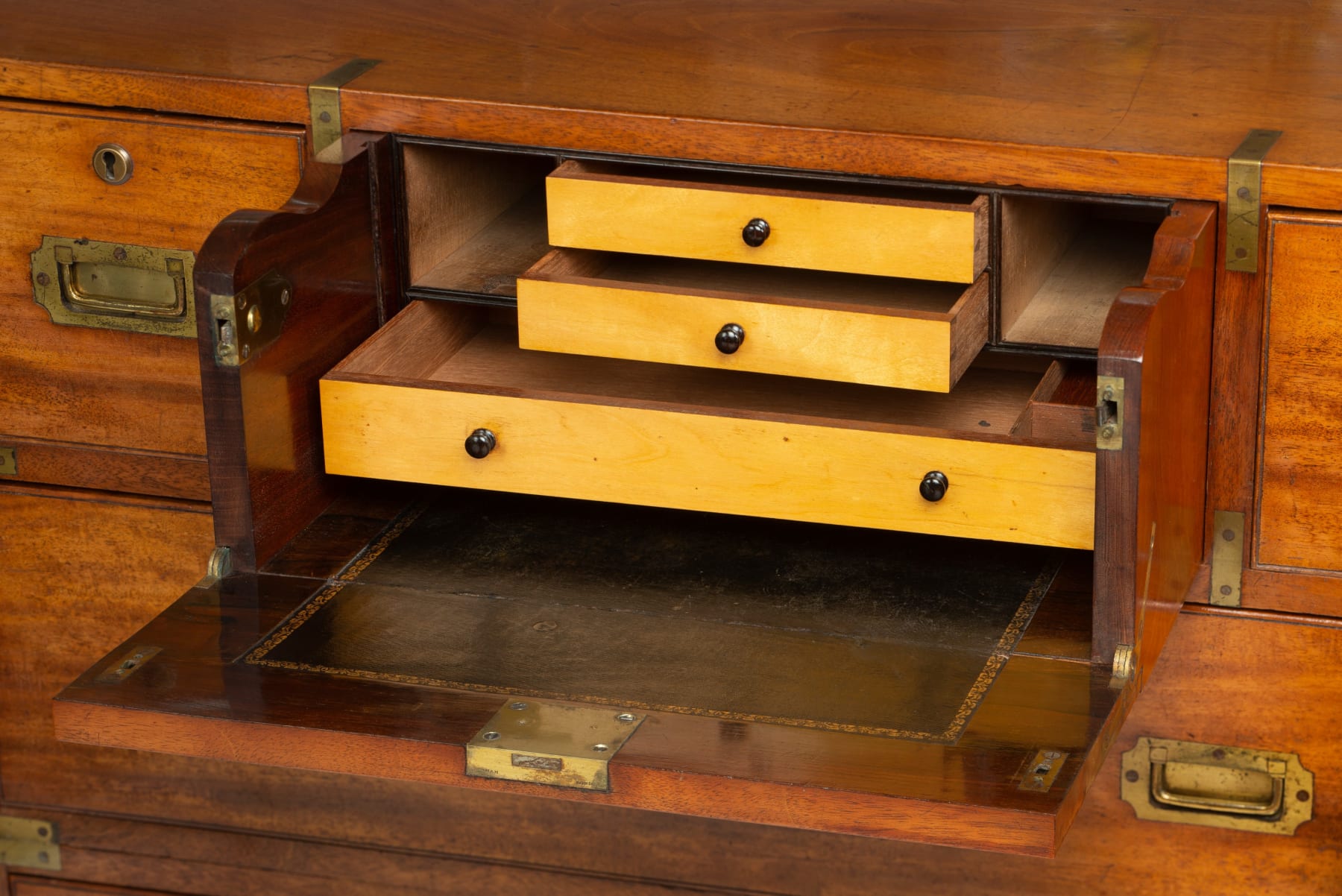19th Century Mahogany and Brass Banded Secretaire Campaign Chest in the manner of William Day
ENGLAND, CIRCA 1850
105 x 99 x 47 cm
41 ¼ x 39 x 18 ½ in
41 ¼ x 39 x 18 ½ in
7027
Further images
The mahogany carcass oak lined and brass banded and in two parts, the top with a central short drawer secretaire with a Bramah spring lock (with two replacement keys). The...
The mahogany carcass oak lined and brass banded and in two parts, the top with a central short drawer secretaire with a Bramah spring lock (with two replacement keys). The secretaire drawer retains the board used to prevent the interior drawers moving in transit. Often these boards are lost. The interior has two maple veneered drawers, flanked by pigeonholes above a long drawer which is fitted to the side for an inkwell and pens; the drawers with ebony knobs; the leathered interior with gilt tooled borders. The secretaire drawer is flanked by short drawers over a single long drawer; the base with two further long drawers, all with flush brass handles, raised on the original turned feet with wooden screw threads.
Bramah locks were stronger than traditional locks and tended to be used for secretaires and for top drawers where valuables were kept. The lock on this chest is stamped BRAMAH LONDON, indicating it was made between 1812 and 1871.
In British Campaign Furniture: Elegance under Canvas, 1740-1914 (Harry N. Abrams, Inc., Publishers, 2001), Nicholas A. Brawer illustrates a similar chest and writes 'These chests...split into two sections of equal size for ease of storage and transportation. For example, the two halves of a chest formed a balanced load when hung over a mule's back.' (p. 59-61).
William Day operated his furniture making business from 1812, opening premises on the Strand, London. He was later joined by his son and continued until circa 1869.
Such a chest with a central short drawer secretaire and brass bands to every board between the drawers indicates the quality of this piece, which would have been amongst the best quality examples on offer in the mid 19th century
Bramah locks were stronger than traditional locks and tended to be used for secretaires and for top drawers where valuables were kept. The lock on this chest is stamped BRAMAH LONDON, indicating it was made between 1812 and 1871.
In British Campaign Furniture: Elegance under Canvas, 1740-1914 (Harry N. Abrams, Inc., Publishers, 2001), Nicholas A. Brawer illustrates a similar chest and writes 'These chests...split into two sections of equal size for ease of storage and transportation. For example, the two halves of a chest formed a balanced load when hung over a mule's back.' (p. 59-61).
William Day operated his furniture making business from 1812, opening premises on the Strand, London. He was later joined by his son and continued until circa 1869.
Such a chest with a central short drawer secretaire and brass bands to every board between the drawers indicates the quality of this piece, which would have been amongst the best quality examples on offer in the mid 19th century












